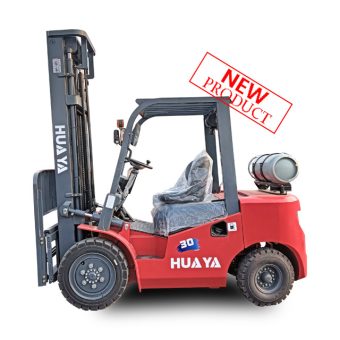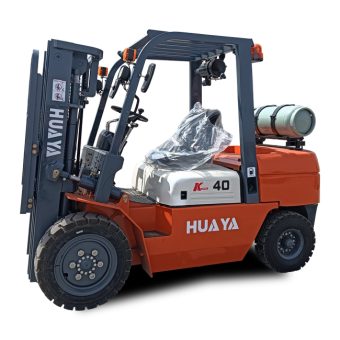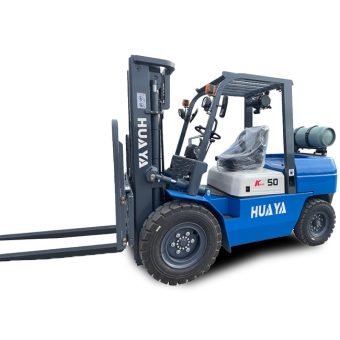
Новости
Forklifts are indispensable in various industries, streamlining operations and increasing productivity. However, the misuse or mishandling of forklifts often leads to accidents that could result in severe injuries or fatalities. Identifying and addressing the root causes of such incidents is critical for creating safer workplaces. This article explores the common causes of forklift accidents and offers actionable strategies for prevention.
Why Training Matters
One of the most significant contributors to forklift accidents is inadequate operator training. Proper training ensures operators understand how to use forklifts safely and effectively.
Inadequate Certifications: Operators without the required certifications may lack essential knowledge, increasing the risk of errors.
Insufficient Refresher Training: Even seasoned operators benefit from regular updates to stay informed about the latest safety protocols and best practices.
The Dangers of Excess Weight
Exceeding the load capacity of a forklift can compromise its stability, leading to hazardous situations.
Consequences of Overloading: Forklifts may tip over when carrying excessive weight, posing risks to operators and nearby workers.
Советы по правильному распределению веса: Always distribute loads evenly and adhere to the manufacturer’s specified weight limits to ensure stability.
Maintenance Ensures Safety
Regular maintenance is vital for keeping forklifts in optimal working condition and preventing mechanical failures.
Распространенные механические неисправности: Issues like brake malfunctions, steering problems, and hydraulic leaks are common culprits in accidents.
Важность регулярных проверок: Schedule frequent inspections to identify and address potential problems before they escalate.
The Impact of Layout on Safety
A disorganized workplace can significantly increase the risk of forklift accidents.
Узкие проходы и беспорядок: Congested areas make navigation challenging and raise the likelihood of collisions.
Limited Visibility: Insufficient lighting and blind spots further exacerbate risks.
Why Speed Kills
Operating forklifts at excessive speeds reduces control, increasing the chances of accidents.
Опасность превышения скорости: High speeds reduce an operator’s ability to respond quickly to obstacles.
Enforcing Speed Limits: Establish and maintain strict speed regulations to promote controlled and safe movements.
Mastering Secure Handling
Accidents often occur due to improper load placement and movement techniques.
Общие ошибки обработки: Dropped loads or uneven stacking can result in injuries and damaged goods.
Secure Load Placement Tips: Always ensure that loads are stable and balanced before moving them.
Modern Equipment, Enhanced Safety
Forklifts equipped with advanced safety features significantly reduce accident risks.
Отсутствующие зеркала и сигнализация: These omissions make forklifts more prone to collisions.
Updated Safety Mechanisms: Opt for forklifts with features like automatic braking and enhanced visibility tools.
Separating People from Machines
Shared spaces between forklifts and pedestrians are common sites of accidents.
Риск столкновений: Lack of clear demarcation leads to dangerous interactions.
Creating Safe Zones: Use barriers, signage, and designated pedestrian pathways to prevent mishaps.
Adapting to Surroundings
Work environments can introduce unique challenges for forklift operators.
Скользкие полы: Мокрые или неровные поверхности повышают вероятность потери управления.
Lighting and Weather Conditions: Proper illumination and adapting to weather conditions are crucial for safe operations.
When Tiredness Becomes Dangerous
Fatigue from long shifts can impair an operator’s focus and reaction time.
Impact of Fatigue: Tired operators are more prone to errors and accidents.
Preventing Fatigue-Related Incidents: Encourage regular breaks and reasonable working hours to maintain alertness.
Clear Communication Saves Lives
Effective communication is critical during forklift operations to prevent accidents.
Failure to Signal: Misunderstandings arise when operators don’t use hand signals or other communication tools.
Training for Clarity: Teach operators to use standardized signals and maintain open communication channels.
The Importance of Oversight
A lack of proper supervision can lead to non-compliance with safety standards.
Role of Supervisors: Supervisors must actively monitor operations and enforce safety rules.
Behavior Monitoring: Regular performance reviews ensure operators adhere to safe practices.
Safety Starts with Compliance
Neglecting established safety procedures significantly increases accident risks.
Ignoring Rules: Non-compliance often results in preventable injuries.
Using Checklists: Checklists help ensure adherence to safety standards and protocols.
Special Considerations for Rough Environments
Operating forklifts on rugged terrain requires specialized equipment and techniques.
Risks of Rough Terrain: Неровные поверхности могут дестабилизировать вилочные погрузчики.
Choosing the Right Equipment: Use forklifts like HUAYA Terrain Forklifts, designed specifically for off-road conditions.
Case Studies in Safety
Real-world incidents provide valuable insights into accident prevention.
Тематические исследования: Analyze real-life examples to understand the consequences of neglecting safety.
Takeaways: Reinforce the importance of proactive measures to avoid similar outcomes.
Forklift safety is a shared responsibility requiring proper training, equipment maintenance, workplace organization, and adherence to protocols. By addressing the factors listed above, industries can significantly reduce accidents and create safer environments for their workers.



